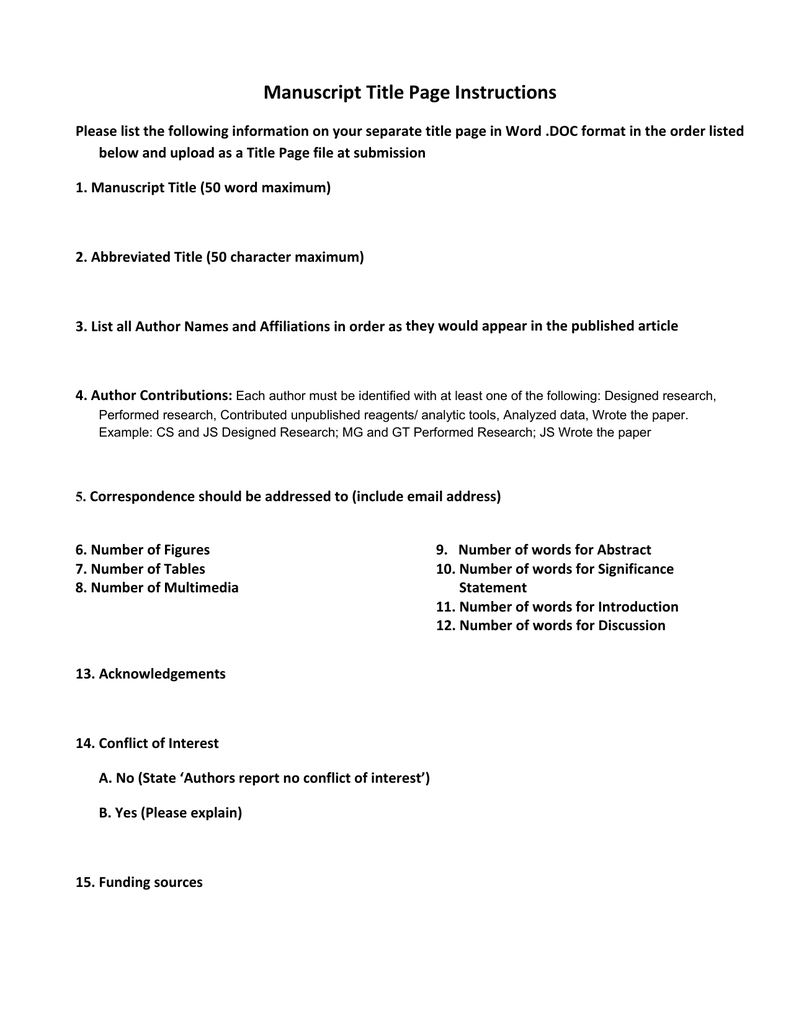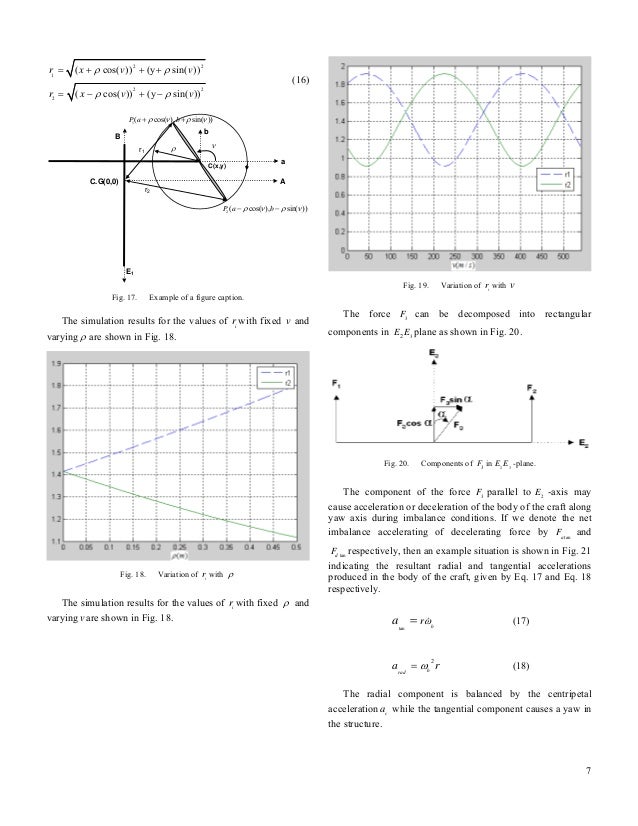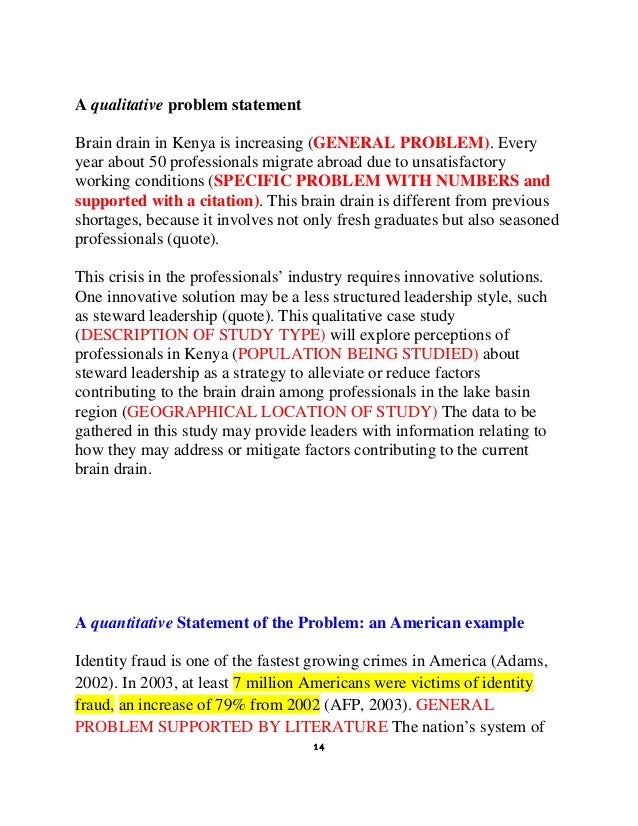
30/1/ · How do you write a manuscript for a research paper? Steps to organizing your manuscriptPrepare the figures and blogger.com the blogger.com up the blogger.com the Discussion. Finalize the Results and Discussion before writing the introduction. Write a clear blogger.com a compelling blogger.com the blogger.come a concise and descriptive Title Purpose: To review the main idea of the paper. • Give names of independent and dependent variables. • words. • First letter of each main word is capitalized. • Center each line of the title. Author’s name • Use your name. Center. Author’s affiliation • Give the name of your school. • Center 14/8/ · How to Format Your Manuscript in 9 Steps Step 1. Give your file a descriptive name. Before you start typing anything, open up your word processor, and SAVE the Step 2. Set one-inch margins on Letter Size (or A4) paper. Tap File > Page Setup and let’s get your paper settings in Step 3.
11 steps to structuring a science paper editors will take seriously
Involve your principal investigator PI early and throughout the process. Gather your proposed figures and tables in a sequence that tells a story. This will form the basis of your Results section. Generate a bulleted outline of the major points for each section of the manuscript. This depends on the journal, but typically, and with minor variations: Introduction, Methods, Results, Discussion. Use Endnote, Reference Manager, Mendeley, or other citation software to start inserting references to go with bullets.
Introduction: What did you study, and why is it important? Methods: What techniques did you use? Each technique should be its own bullet, with sub-bullets for key details. If you used animal or human subjects, include a bullet on ethics approval. Important methodologies and materials, i. Results: What were your findings? Each major finding should be its own bullet, with sub-bullets going into more detail for each major finding. These bullets should refer to your figures. Discussion: Summarize your findings in the context of prior work.
Discuss possible interpretations. It is important to include a bullet describing the limitations of the presented work. Mention possible future directions. Now read the entire manuscript format for research paper including the figures.
Is it a complete story? If not, you should have a good idea of what it will take to finish the manuscript. You first need to decide where you want to submit your manuscript. I like to consider my ideal target audience. Your academic reputation is priceless.
Convert your outline including the figure captions to complete sentences. Write your abstract after the first draft is completed. Discuss all possible authors with your PI. If the study involved many people, create a table of possible authors showing their specific contributions to the manuscript. This is helpful to do in any case as many journals now require this information. Assigning authorship is sometimes complicated, but keep in mind that the Acknowledgements can be used to recognize those who made minor contributions including reading the manuscript to provide feedback.
An alternative is to generate the initial outline or first draft with the help of co-authors. This can take a lot more work and coordination, but may make sense for highly collaborative and large manuscripts. Circulate the manuscript draft to all possible authors. Thank them for their prior and ongoing support. Inform your co-authors where you would like to send the manuscript and why.
Give them a reasonable deadline to provide feedback minimum of a few weeks. If you use Microsoft Word, ask your co-authors to use track changes. Collate comments from your co-authors. The Combine Documents function in Word can be very helpful. Repeat this process until you and your PI and co-authors are manuscript format for research paper that the manuscript is ready for submission.
Some prefer to avoid listing authors on manuscript drafts until the final version is generated because the relative contributions of authors can shift during manuscript preparation. Write a cover letter for your manuscript. This makes the cover letter, and by extension, the manuscript, more professional. Some journals have required language for cover letters regarding simultaneous submissions to other journals.
If you need to do this, include key references and a citation list at the end of the cover letter. Be prepared to do so. Conflicts of interest should be declared in the manuscript, even if the journal does not explicitly request this.
Ask your co-authors about any such potential conflicts. Gather names and official designations of any grants that supported the work described in your manuscript. Ask your co-authors and your PI.
This is very important for funding agencies such as the NIH, manuscript format for research paper, which scrutinize the productivity of their funded investigators and take this into account when reviewing future grants, manuscript format for research paper. Editors with expertise in your area are more likely to be able to identify and recruit reviewers who are also well-versed in the subject matter of your manuscript. Discuss this with your Manuscript format for research paper and co-authors.
Likewise, journals often allow authors to suggest reviewers. Some meta-literature indicates that manuscripts with suggested reviewers have an overall higher acceptance rate. It also behooves you to have expert reviewers that can evaluate your manuscript fairly, but also provide feedback that can improve your paper if revisions are recommended. Avoid suggesting reviewers at your own institution or who have recently written papers or been awarded grants with you.
Savvy editors look for these types of relationships between reviewers and authors, and will nix a suggested reviewer with any potential conflict of interest. Discuss suggested reviewers with your PI and co-authors. On the flip side, many journals will allow you to list opposed reviewers. In small fields, it may not be possible to exclude reviewers and still undergo expert peer review.
Definitely a must-discuss with your PI and co-authors, manuscript format for research paper. Generate a final version of the manuscript. Most journals use online submission systems that mandate uploading individual files for the manuscript, manuscript format for research paper, cover manuscript format for research paper, etc.
You may have to use pdf converting software i. Review the final version, including the resolution and appearance of figures. Make sure that no edges of text or graphics near page margins are cut off Adobe Acrobat manuscript format for research paper does this with Microsoft Word.
Send the final version to your PI and co-authors. Revise any errors. Then submit! Good luck!
Ten Useful Tips for Writing a Successful Manuscript: For Beginners
, time: 4:57How do you write a manuscript for a research paper? • Students Writing Blog

Manuscript Format Title Page 1. Title Only the first letter of the first word and proper nouns should be capitalized. For example, “Phosphorus forms and distribution in the Zhejiang coastal sediment in the East China Sea”. 2. Author names and affiliations Use full names, but not initials, for all the authors’ names. The author’s given name 30/1/ · How do you write a manuscript for a research paper? Steps to organizing your manuscriptPrepare the figures and blogger.com the blogger.com up the blogger.com the Discussion. Finalize the Results and Discussion before writing the introduction. Write a clear blogger.com a compelling blogger.com the blogger.come a concise and descriptive Title format the paper properly. This will save time, allow for a more efficient processing of your manuscript, and show the reviewers that you are careful in your work and respect the requirements of the journal’s format. Make sure that you carefully check your functional writing composition, style, and syntax

No comments:
Post a Comment